Outdoor stairs not only enhance the accessibility and aesthetic appeal of your outdoor spaces but also face the relentless challenges of weather, wear, and tear. Selecting the right material for your outdoor stairs is crucial for ensuring durability, safety, and seamless integration with your landscape design. This guide delves into the best materials for outdoor stairs, explores surfaces for outdoor steps, examines durability, looks at alternatives to concrete stairs, and discusses waterproofing solutions, providing you with comprehensive insights to make an informed decision for your deck or outdoor space.
Table of Contents
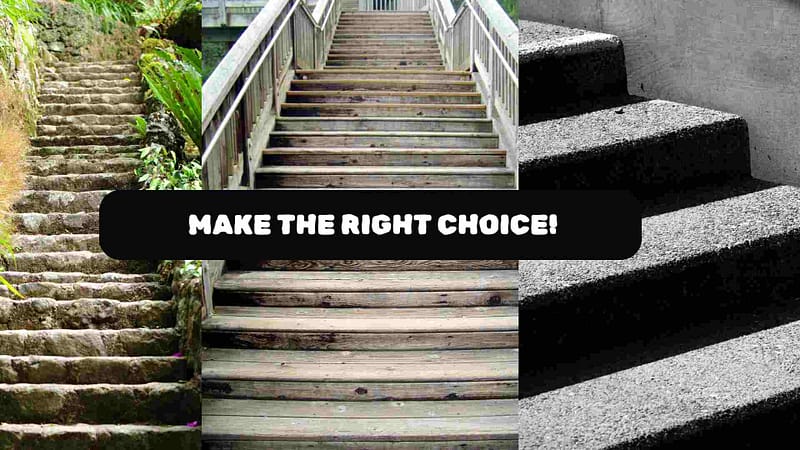
The Premier Material for Outdoor Stairs
- Stone: Aesthetic and durable.
- Concrete: Low maintenance, highly durable.
- Wood: Natural look, requires treatment.
- Composite: Durable, minimal upkeep.
- Metal: Modern, weather-resistant.
The best material for outdoor stairs balances durability, maintenance, aesthetic appeal, and safety. Stone and concrete offer longevity, wood brings natural beauty, composite provides ease of maintenance, and metal adds a contemporary touch.
When selecting the best material for outdoor stairs, several factors come into play, including climate, budget, design preference, and maintenance willingness. Stone stairs, such as granite or slate, offer unmatched durability and a timeless aesthetic that complements natural landscapes. However, stone can be costly and may require professional installation.
Concrete stairs are another highly durable option, known for their strength and low maintenance requirements. They can be poured into various shapes and finished with textures or colors to match your design preferences. While concrete is cost-effective and versatile, it may lack the warmth and character of natural materials.
Wood stairs, such as cedar, redwood, or pressure-treated lumber, provide a warm, natural look that integrates beautifully with outdoor environments. Wood requires regular treatment to resist rot, pests, and weather damage, making it more maintenance-intensive than some alternatives.
Composite materials, made from a blend of wood fibers and plastics, are becoming increasingly popular for outdoor stairs. They offer the look of wood without the same level of upkeep, resisting rot, fading, and insect damage. Composites can be more expensive initially but save on long-term maintenance costs.
Metal stairs, fabricated from aluminum or galvanized steel, present a modern, sleek appearance and excellent weather resistance. They’re particularly suitable for contemporary designs and coastal areas where corrosion resistance is vital. Metal can be slippery when wet, though, so safety considerations are necessary.
Check out this stunning before, during and after outdoor stair project we handled for a client.
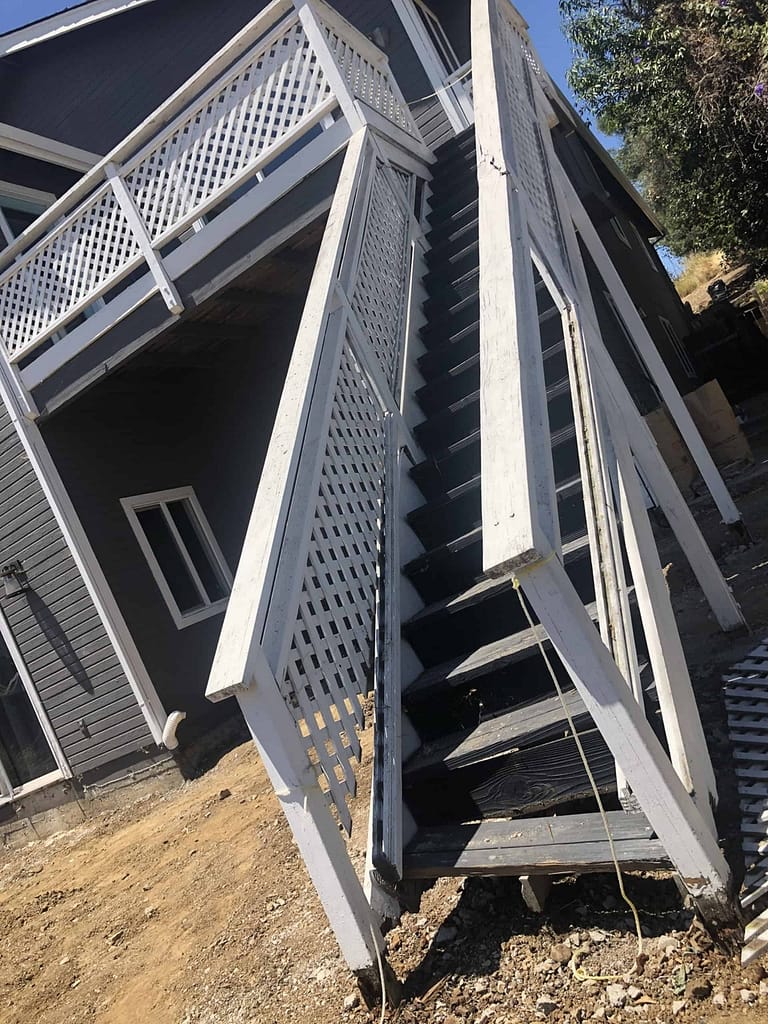
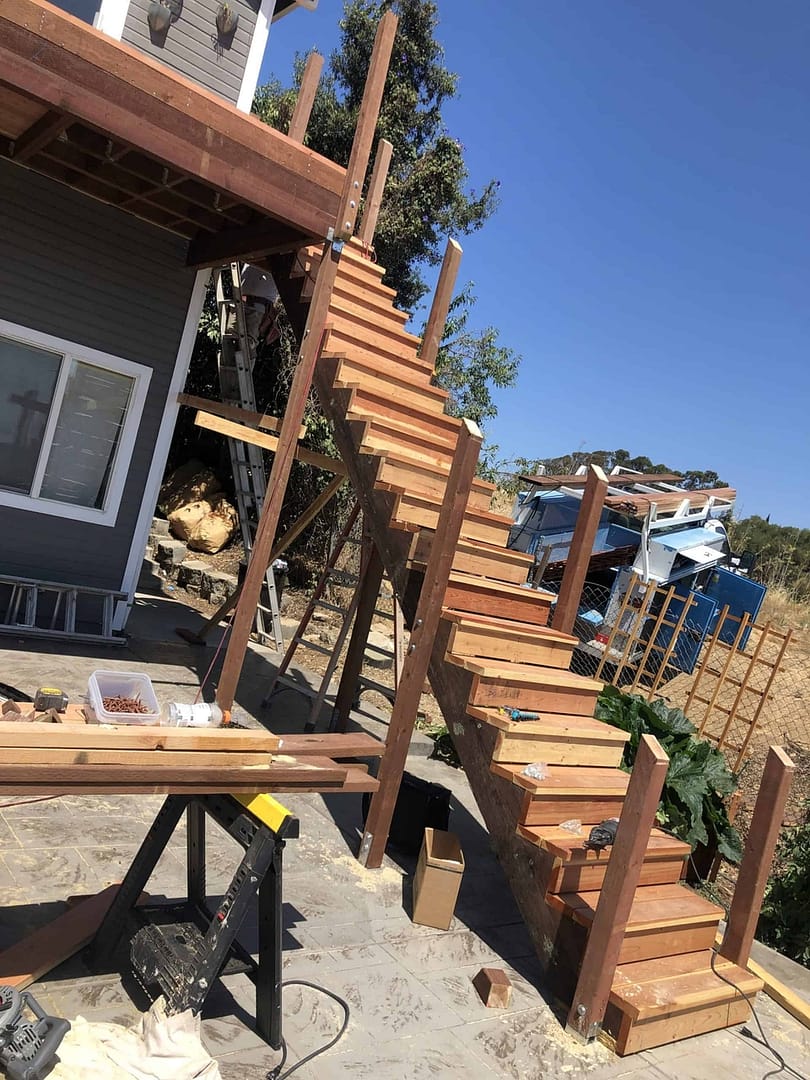
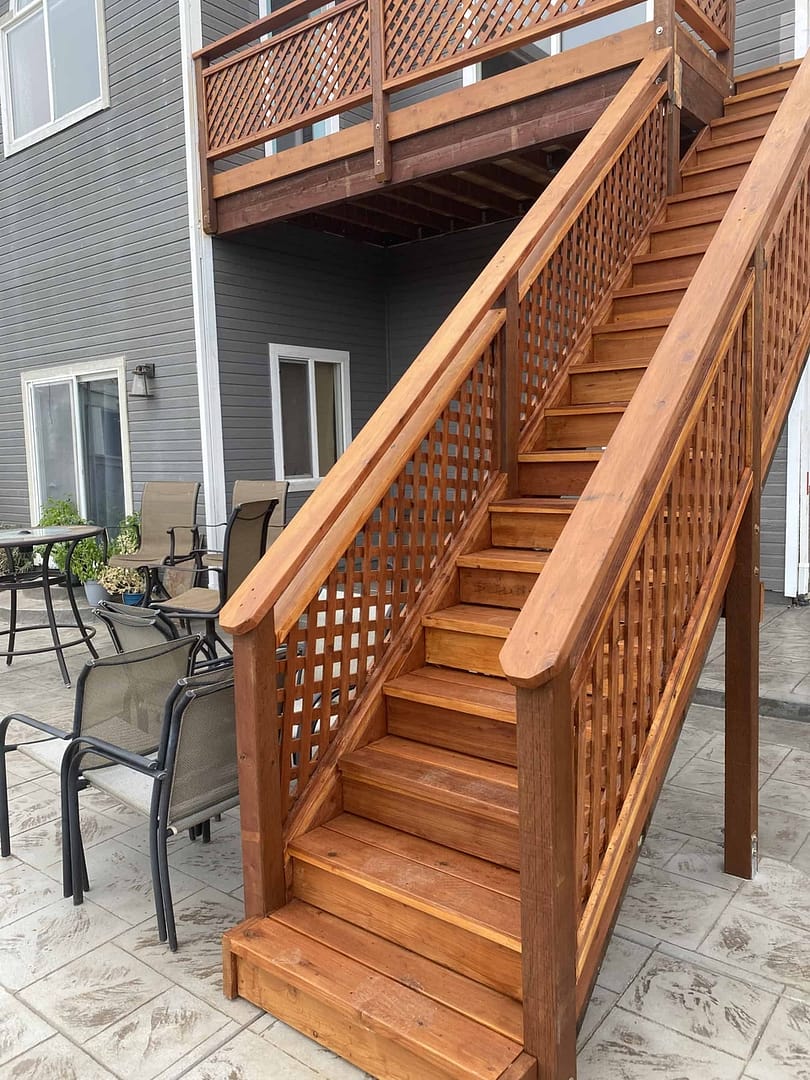
The Most Durable Outdoor Stairs
- Concrete and Stone: Unrivaled in durability.
- Composite Decking: Long-lasting with minimal fade.
- Galvanized Steel: Excellent for weather resistance.
For maximum durability, concrete and stone stairs stand unrivaled, composite decking offers a long-lasting option with minimal fade, and galvanized steel provides robust weather resistance, ensuring your outdoor stairs withstand the test of time and elements.
Durability is a paramount concern when it comes to outdoor stairs, as they must endure harsh weather conditions, heavy foot traffic, and the test of time. Concrete and stone are the gold standards for durability, resisting wear and requiring little to no maintenance over decades. Their initial cost and installation complexity are offset by their longevity and timeless appearance.
Composite decking materials have emerged as a strong contender in durability, designed to withstand fading, staining, and rotting far better than traditional wood. These materials offer a balance of aesthetic appeal and resilience, with warranties often extending 25 years or more, making them a wise investment for outdoor stairs.
Galvanized steel, treated to resist corrosion and rust, offers an industrial-strength solution for outdoor stairs. It’s particularly suited for environments with extreme weather conditions, providing a durable and stable structure. While metal may not offer the natural look of wood or stone, its longevity and minimal maintenance requirements make it an attractive option for modern and minimalist designs.
Another remarkable before, during and after concrete outdoor stair project we handled for a client.
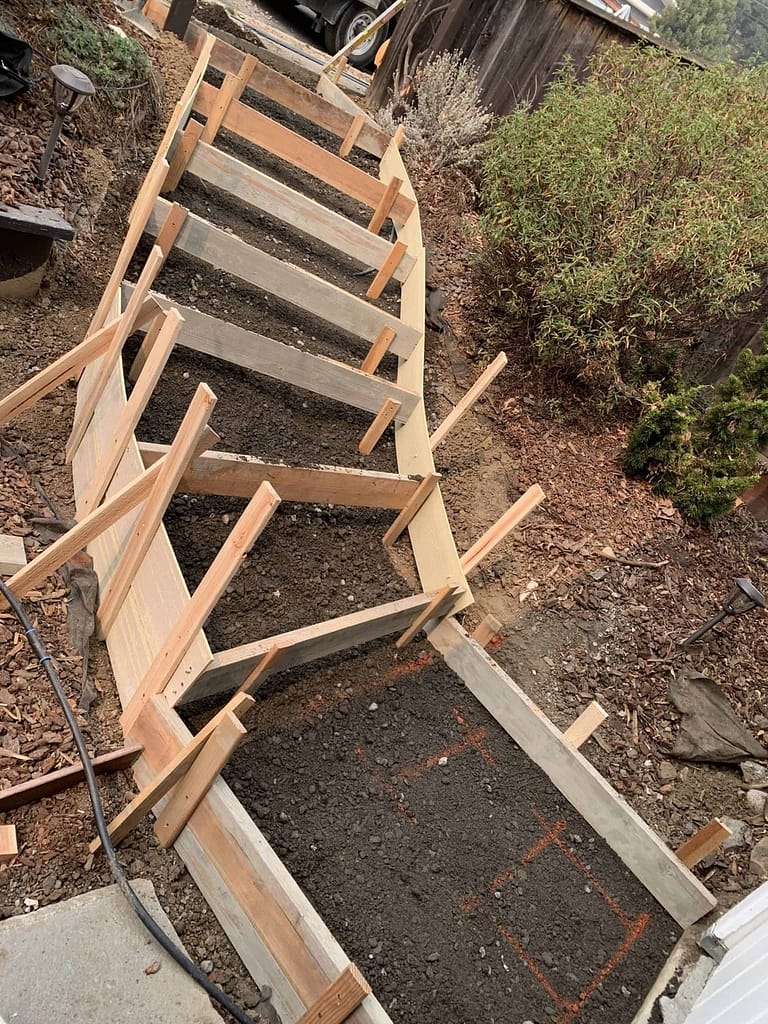
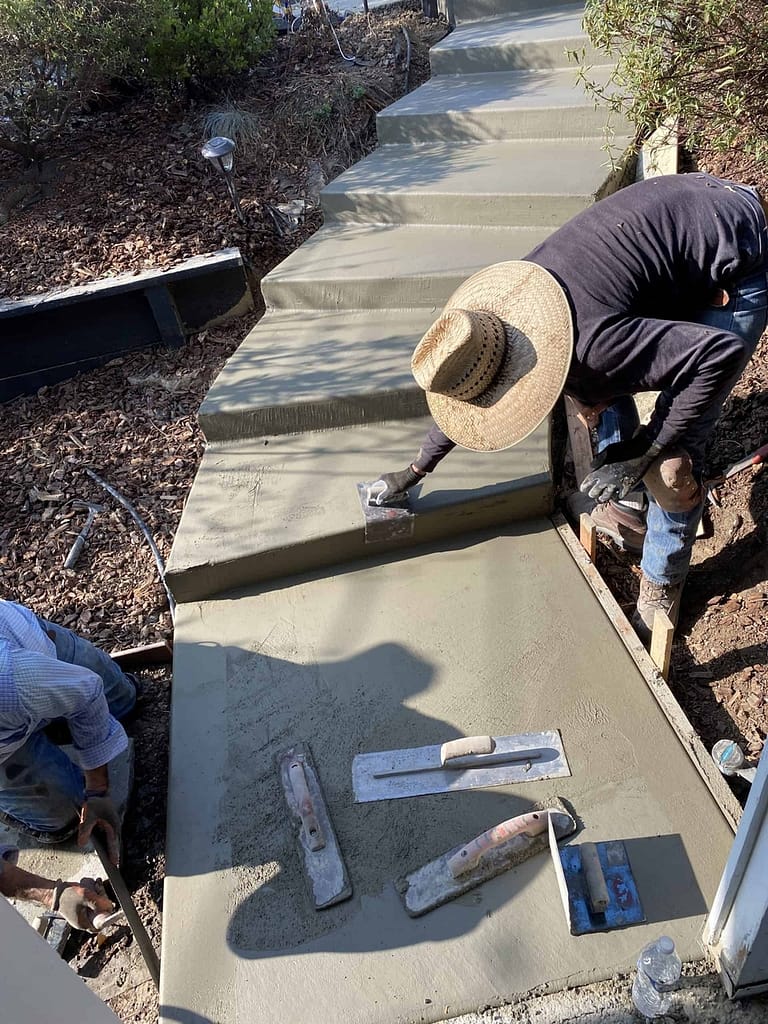

Waterproofing External Steps
- Sealants: Protect wood and concrete.
- Slip-resistant Coatings: Enhance safety.
- Regular Inspections: Identify and address issues early.
Making stairs impermeable involves applying sealants to protect materials like wood and concrete, using slip-resistant coatings to enhance safety, and conducting regular inspections to address potential issues early, ensuring the longevity and safety of your outdoor stairs.
This process is crucial for extending the life of your outdoor stairs, especially in climates with heavy rainfall or snow. For wood stairs, a high-quality water-repellent sealant can prevent moisture absorption, reducing the risk of rot, warping, and mold. It’s recommended to reapply sealant every two to three years, depending on exposure and wear.
Concrete stairs benefit from waterproofing treatments that fill pores and prevent water ingress, which can cause cracking and erosion over time. Epoxy or silicone-based sealants are effective options, offering durable protection with minimal visual impact.
Incorporating slip-resistant coatings or treads on all types of stairs can improve safety by reducing the risk of slips and falls in wet conditions. These coatings are available in clear and colored varieties, allowing you to enhance safety without compromising the stair’s appearance.
Regular inspections of your outdoor stairs can identify signs of wear or damage early, allowing for timely repairs that prevent more significant issues. Look for cracks, loose parts, and signs of moisture damage, and address these promptly to maintain the integrity and safety of your stairs.
Alternatives to Concrete Stairs
Exploring alternatives to concrete stairs? Consider the warm, natural charm of wooden steps, the sleek durability of metal staircases, or the traditional versatility of brick and pavers. Each offers unique aesthetic and functional benefits, catering to diverse design preferences and requirements in an elegant manner.
While concrete stairs are celebrated for their durability and low maintenance, several alternatives offer unique benefits and aesthetic diversity for your outdoor space. Wooden stairs, especially those made from pressure-treated lumber or naturally rot-resistant species like cedar, add warmth and natural beauty to landscapes. They require regular sealing or staining to maintain their appearance and longevity but can be a cost-effective and customizable option.
Metal staircases, fabricated from aluminum or stainless steel, provide a modern alternative to concrete. They’re lightweight, resistant to corrosion, and can be designed to fit any outdoor space. While typically more expensive than wood, metal stairs offer a distinctive look with long-lasting durability and minimal upkeep.
Brick and pavers are traditional materials that create charming, durable stairways suitable for a variety of home styles. They can be laid in different patterns to create unique designs and are particularly well-suited to complement brick or stone homes. Maintenance involves occasional resetting or replacement of individual bricks or pavers but offers a classic aesthetic that ages beautifully.

Conclusion
Choosing the best material for outdoor stairs involves considering durability, safety, maintenance, aesthetics, and cost. Materials like stone, concrete, wood, composite, and metal each offer unique advantages, catering to different priorities and design visions. By selecting the right surface, ensuring slip resistance and waterproofing, and understanding the maintenance required, you can ensure that your outdoor stairs remain safe, functional, and visually appealing for years to come.
For further insights on selecting materials and designing outdoor spaces, visit our comprehensive resource center. Our expert advice and detailed guides are designed to assist homeowners in navigating the complexities of outdoor renovations, ensuring results that are both practical and stylish.






